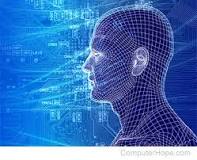Browse
Disciplinary Content
Posted on: #iteachmsu



Posted by
over 5 years ago

HISTORY OF ROOT CAUSE ANALYSIS
Root cause analysis can be traced to the broader field of total quality management (TQM). TQM has developed in different directions, including a number of problem analysis, problem solving, and root cause analysis.
Root cause analysis is part of a more general problem-solving process and an integral part of continuous improvement. Because of this, root cause analysis is one of the core building blocks in an organization’s continuous improvement efforts. It's important to note that root cause analysis in itself will not produce any results; it must be made part of a larger problem-solving effort for quality improvement.
Root cause analysis can be traced to the broader field of total quality management (TQM). TQM has developed in different directions, including a number of problem analysis, problem solving, and root cause analysis.
Root cause analysis is part of a more general problem-solving process and an integral part of continuous improvement. Because of this, root cause analysis is one of the core building blocks in an organization’s continuous improvement efforts. It's important to note that root cause analysis in itself will not produce any results; it must be made part of a larger problem-solving effort for quality improvement.
Disciplinary Content
Posted on: #iteachmsu


Posted by
over 5 years ago
Biotechnology is the broad area of biology, involving living systems and organisms to develop or make products, or "any technological application that uses biological systems, living organisms, or derivatives thereof, to make or modify products or processes for specific use" (UN Convention on Biological Diversity, Art.
Disciplinary Content
Posted on: #iteachmsu



Posted by
over 5 years ago

TGlobal warming is the mainly human-caused rise of the average temperature of the Earth's climate system and has been demonstrated by direct temperature measurements and by measurements of various effects of the warming.[5] It is a major aspect of climate change which, in addition to rising global surface temperatures,[6] also includes its effects, such as changes in precipitation.[7] While there have been prehistoric periods of global warming,[8] observed changes since the mid-20th century have been unprecedented in rate and scale.[9]
Disciplinary Content
Posted on: #iteachmsu


Posted by
over 5 years ago
Virology and Epidemiology
•
Rhinoviruses are unenveloped RNA viruses in the family Picornaviridae.
•
One-hundred one serotypes have been detected, now divided into two phylogenetic species (human rhinovirus [HRV]-A and HRV-B); a third species, HRV-C, also exists.
•
Rhinoviruses are unenveloped RNA viruses in the family Picornaviridae.
•
One-hundred one serotypes have been detected, now divided into two phylogenetic species (human rhinovirus [HRV]-A and HRV-B); a third species, HRV-C, also exists.
Disciplinary Content
Posted on: #iteachmsu



Posted by
over 6 years ago

Big data is more than high-volume, high-velocity data. Learn what big data is, why it matters and how it can help you make better decisions every day.
Disciplinary Content
Posted on: #iteachmsu



Posted by
over 6 years ago

Science and technology is a topic that encompasses science, technology, and the interactions between the two. Science is a systematic enterprise that builds and organizes knowledge in the form of explanations and predictions about nature and the universe. Technology is the collection of techniques, methods or processes used in the production of goods or services or in the accomplishment of objectives, such as scientific investigation, or any other consumer demands.
Science may drive technological development, by generating demand for new instruments to address a scientific question, or by illustrating technical possibilities previously unconsidered. In turn, technology may drive scientific investigation, by creating demand for technological improvements that can only be produced through research, and by raising questions about the underlying principles that a new technology relies on.
For the majority of human history, technological improvements were achieved by chance, trial and error, or spontaneous inspiration. When the modern scientific enterprise matured in the Enlightenment, it primarily concerned itself with basic questions of nature. Research and development directed towards immediate technical application is a relatively recent occurrence, arising with the Industrial Revolution and becoming commonplace in the 20th century.
As academic fields, science and technology are often grouped with engineering and mathematics, as the STEM fields.
Science may drive technological development, by generating demand for new instruments to address a scientific question, or by illustrating technical possibilities previously unconsidered. In turn, technology may drive scientific investigation, by creating demand for technological improvements that can only be produced through research, and by raising questions about the underlying principles that a new technology relies on.
For the majority of human history, technological improvements were achieved by chance, trial and error, or spontaneous inspiration. When the modern scientific enterprise matured in the Enlightenment, it primarily concerned itself with basic questions of nature. Research and development directed towards immediate technical application is a relatively recent occurrence, arising with the Industrial Revolution and becoming commonplace in the 20th century.
As academic fields, science and technology are often grouped with engineering and mathematics, as the STEM fields.
Disciplinary Content
Posted on: #iteachmsu



Posted by
almost 2 years ago

Science & technology is a topic that encompasses science, technology, and the interactions between the two. Science is a systematic enterprise that builds and organizes knowledge in the form of explanations and predictions about nature and the universe. Technology is the collection of techniques, methods or processes used in the production of goods or services or in the accomplishment of objectives, such as scientific investigation, or any other consumer demands.
Science may drive technological development, by generating demand for new instruments to address a scientific question, or by illustrating technical possibilities previously unconsidered. In turn, technology may drive scientific investigation, by creating demand for technological improvements that can only be produced through research, and by raising questions about the underlying principles that a new technology relies on.
For the majority of human history, technological improvements were achieved by chance, trial and error, or spontaneous inspiration. When the modern scientific enterprise matured in the Enlightenment, it primarily concerned itself with basic questions of nature. Research and development directed towards immediate technical application is a relatively recent occurrence, arising with the Industrial Revolution and becoming commonplace in the 20th century.
As academic fields, science and technology are often grouped with engineering and mathematics, as the STEM fields.
Science may drive technological development, by generating demand for new instruments to address a scientific question, or by illustrating technical possibilities previously unconsidered. In turn, technology may drive scientific investigation, by creating demand for technological improvements that can only be produced through research, and by raising questions about the underlying principles that a new technology relies on.
For the majority of human history, technological improvements were achieved by chance, trial and error, or spontaneous inspiration. When the modern scientific enterprise matured in the Enlightenment, it primarily concerned itself with basic questions of nature. Research and development directed towards immediate technical application is a relatively recent occurrence, arising with the Industrial Revolution and becoming commonplace in the 20th century.
As academic fields, science and technology are often grouped with engineering and mathematics, as the STEM fields.
Disciplinary Content
Posted on: #iteachmsu



Posted by
over 6 years ago

P-Just Embed a Phone Into This Editor’s Mind, Already
Choire Sicha, who runs The New York Times’s Styles desk, has such a close relationship with his smartphone, he says, it may be time to “punch the circuitry into the back of our skull.”
Choire Sicha, who runs The New York Times’s Styles desk, has such a close relationship with his smartphone, he says, it may be time to “punch the circuitry into the back of our skull.”
Disciplinary Content
